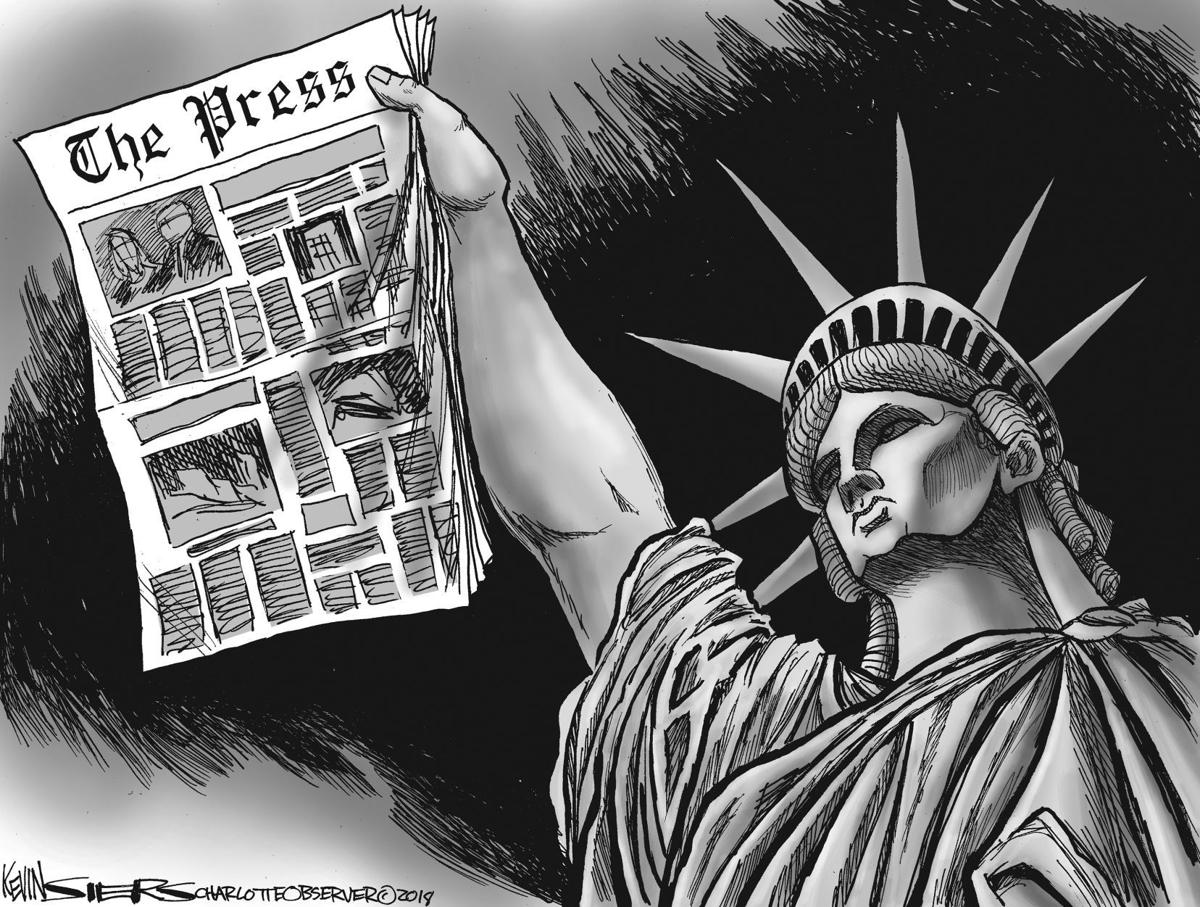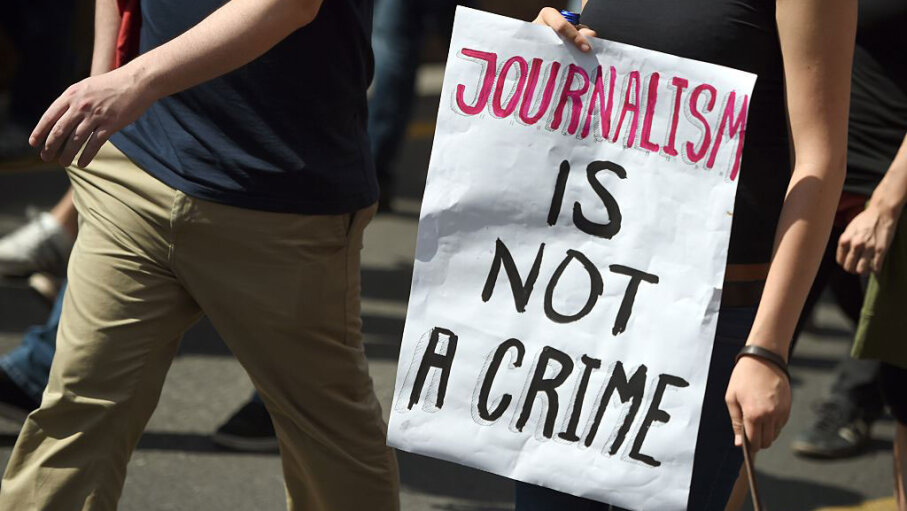The freedoms granted to the press are not as straightforward as one may believe, nor are they all encompassing. Under the First Amendment in the United States Constitution it states that “Congress shall make no law respecting an establishment of religion, or prohibiting the free exercise thereof; or abridging the freedom of speech, or of the press; or the right of the people peaceably to assemble, and to petition the government for a redress of grievances.”
The vague nature of the rights of the press and the access granted to the media has come into question throughout history and plays a major role in today’s journalism and the rights allocated to the press. The First Amendment does not require the government to assist the press with news gathering and sharing information with the public, and in 1972 the Supreme Court stated that the press is not assured “a constitutional right of special access to information not available to the public generally.”
It is vital for the press to be aware of the extent to which the government is able to control and restrict their access for stories. This is especially important when debunking the fake news accusations that are prevalent in society, and the information accessibility that is available to journalists. Through analysis of landmark case decisions and the restrictions in place that limit freedoms found within the press, the determinants of their access; whether it be public records, confidentiality, or privacy issues will be revealed for today’s press’ practices.

The widespread phenomenon of fake news has led to questioning of the media, and many of the reports that are disseminated throughout the public. The press is a fourth estate and therefore one of its primary focuses, upon creation, is to keep the three branches of government in check. It is crucial for journalists to stick strictly to supplying factual and well-researched work in order for the public to stay informed through the work of the press, rather than their own opinions.
The public’s trust in the media is higher for local news stations versus national ones according to a Statista telephone interview conducted in May 2019. The national media outlets typically report on the major government details, which reinforces the idea that they must strive to regain the trust of the public in order to disseminate information that the public needs to be made aware of.
The issue in regulation is the decision of what constitutes the press within today’s society due to increased mediums of news, from broadcasting to blogs. Differences between the definitions of the press and of journalists have been discussed, but no restrictions are currently in place to discern the two as of now.
Access for the press was aided with the Freedom of Information Act (FOIA) in 1966, but it does not grant total transparency for the media. The federal law was first signed into effect by President Lyndon B. Johnson as an attempt to redirect the message provided in the Administrative Procedure Act (APA) of 1946. The APA was the first attempt at allowing for inspection of federal documents, if there was “good cause” to do so, yet it ended up creating higher disclosure between the public and the government.
The FOIA allows for a quicker turn-around in responses and resources for those in the public that request information from federal agencies and has been amended throughout its lifetime. The introduction of the Electronic Freedom of Information Act, E-FOIA, created a virtual approach to requesting information and documents, and is designed to expedite the process and allow for specific format requests from the public or the press.
While this benefits the needs of journalists and their accelerated time frame for collection of information, the Act does not cater to the press in any way. The privileges afforded to the press are the same as what is offered to the general public in terms of convenience and accessibility.
There are exemptions in place for FOIA, which attest to the limitations that are regulated by the federal government in terms of press freedom. Nine exemptions are in place for FOIA, which seek to protect sensitive information that is confidential to government agencies. The areas included under Title 5 in the U.S. Code as the exemptions for records are associated with: National defense, personnel rules, statutory exemptions, trade secrets, agency memoranda, privacy, law enforcement, financial records, and oil field data.
There are many landmark cases that brought forth this debate concerning what a journalist’s access entails, and they have set a precedent for those in the industry today. The Supreme Court oversaw Pell v. Procunier in 1974 which found that the press has no constitutional right of access above the general public. This case followed a reporter's desire to interview certain inmates in prison, and it was established that the press had the rights of the public to see inmates, yet not order one on one time with specific individual inmates.
In Landmark Communications v. Virginia, the published report that was under conviction, while accurate and factual, violated a Virginia state law that restricted journalists from disseminating information gathered from a Commission hearing. This proves that the media must be aware of local legislation when news-gathering and publishing information. While a reporter may gain information in a legal fashion, there could be a state mandate in place that restricts the dissemination. These cases are valuable to consider when analyzing the various ways that the media is monitored and limited not only on the federal level, but also in terms of state restriction.

The media must also consider their decisions regarding source confidentiality and anonymously published material because of the consequences that may ensue. Journalists have the ability to keep the identity of their sources confidential, which is known as journalist's privilege; however, there are times when the government can request access to their source and the research that was conducted for the report.
The case of Branzburg v. Hayes resulted in the Supreme Court deciding that reporters would have to reveal their sources in some cases, and if they failed to do so they could be held in jail for contempt. The Branzburg Test resulted as a combination of three cases heard by the Supreme Court, all in which journalists, from various news outlets, refused to divulge the identities of their confidential sources that provided information in their stories to the court.
While this test has gained popularity, and Branzburg has been cited in over 1,900 cases since, there is no jurisdiction that grants the press the ability to refuse testifying in court. In an attempt to grant greater protection for journalists and allow for published anonymity, 40 states have chosen to enact shield laws. These laws vary in their level of protection state to state, but inevitably “afford privilege to journalists to not disclose information obtained during course of their news gathering” (Caristi & Davie p. 366). These laws are designed to allow the media the ability to discern the level of privacy in sharing messages with the public.
The issue of privacy is another factor that comes into play when on the topic of journalistic rights. Information that is acquired legally about a private topic, and is then publicly published, generally allows for media protection by the court; yet there are no outright laws in place to do so. It would be unconstitutional for the court to forbid the dissemination of factual messages obtained in legal ways.
This protection partially excludes what is known as “revenge porn” which is a different type of photographic privacy concern that has remained unresolved since attention was brought to it in 2014. Intrusion has become the main cause for action against the media due to the methods used to gather the news, rather than acting on the actual information that is then disclosed to the public. This dispute is popular with celebrity press and the methods used to obtain information about those in the public light, even if it is true.
Another issue to consider in terms of press privacy is their level of access to emergency and disaster sites, which could also be filed under intrusion in some cases. In thecase of Leiserson v. City of San Diego in 1988, a cameraman was arrested at the site of a jet crash by a San Diego police officer. Inevitably the court ruled that the media does have the right to access disaster sites because of statutory mandates in place. Generally, news outlets are allowed in “press zones” if they are distinguished around the site, but the public’s right to the information surrounding the disaster area is what allows for the media’s coverage at these scenes.
As an aspiring journalist, understanding the implications of press freedoms and their access is fundamental. I believe that the restrictions loosened on state levels should also be considered for the federal level as it allows for greater service to the public.
Especially when thinking in terms of investigative journalism, the evidence rooted in documents and reliable sources is necessary in order to provide substantial truths to the public. Informing the masses about the workings of the government is in part what the press was created to do, and since they are the ones providing the message it is crucial that they have access to all types of evidence, along with the freedom to publish it.
It is likely that the future will bring about a broader definition of the term “press” due to the increased citizen journalism that has erupted in the 20th century. Regulations will extend from the current media outlets and cover the bloggers and youtubers of our generation that are, in my opinion, a source of the “fake news” that is so widely accepted these days.
Ally, this is a VERY good post. But you need a link to a source you used for all this information. All best!
ReplyDelete